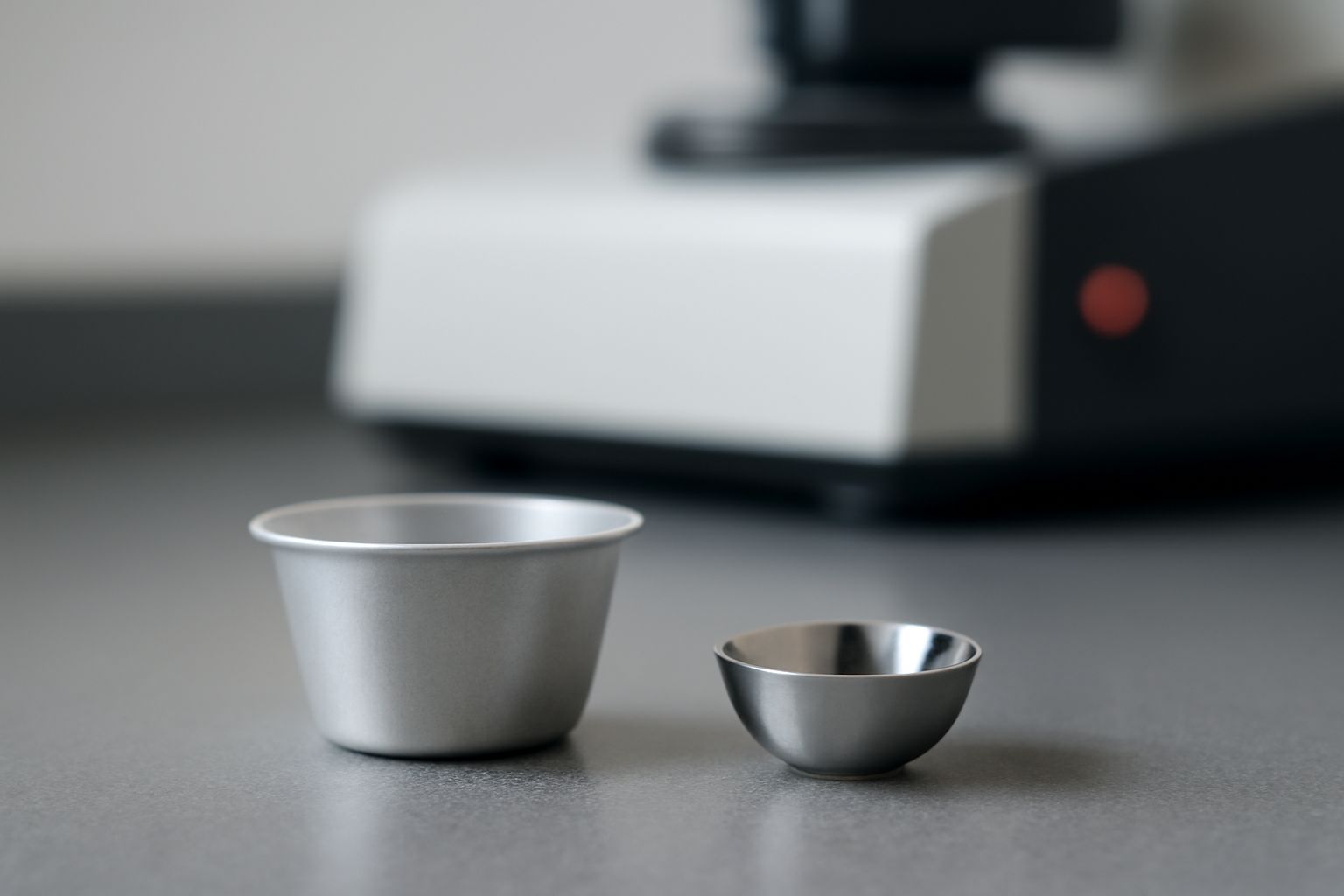Your cart is empty.
shop now
Your cart is empty.
shop now
Using the wrong DSC crucible in lab tests can cause data errors, contamination, or equipment damage. Each material and design suits different kinds of samples and scientific work.
To choose the right DSC crucible, match the pan material and design to the test conditions: polymers need non-reactive aluminum, pharmaceuticals may need seals, and high-temperature testing prefers platinum for stability.

Laboratory work changes with every new sample type. I adjust my crucible choice based on the specifics of each scenario, using science-backed recommendations and manufacturer guidelines. Good selection leads to cost savings and consistent results. Here’s how I pick the best DSC crucible for every job.
Polymer testing needs stable thermal conditions and clear signals. Choose the wrong pan, and your test may suffer from background noise, bad peaks, or uncontrolled chemical reactions.
The best pans for polymer testing use high-purity aluminum, as it offers excellent heat transfer and keeps most organic samples stable without side reactions.
| Key Requirement | Why It Matters | Best Choice |
|---|---|---|
| Non-reactive Material | Avoids unwanted sample reactions | High-purity aluminum |
| Good Heat Transfer | Gives accurate transitions and peaks | Aluminum base |
| Repeatability | Assures results in multiple runs | Consistent pan thickness and fit |
My workflow improved when I sourced certified aluminum pans for polymer tests. According to polymer science research, this approach lowers risks and helps keep baseline signals clean.
Pharmaceuticals may be sensitive to air, moisture, or cross-contamination. Many drugs degrade if not sealed away from the lab environment, leading to failed analyses.
To protect drug samples, I use hermetic or crimp-sealed DSC crucibles. These designs stop leaks and guard samples from water or oxygen, resulting in more reliable phase transition measurements.
| Drug Sample Need | Seal Solution | Testing Outcome |
|---|---|---|
| Moisture protection | Hermetic seal, tight crimp | Stable mass, precise melting point |
| Air exposure block | Use oxygen shielded pan | No oxidation, no degradation |
| Cross-contamination | One-pan, one-use, careful disposal | No false peaks, clean profile |
I follow pharmaceutical analysis protocols and always use fresh, pre-checked sealed pans for each batch. Proper sealing has improved my confidence in new drug formulation tests.
Extreme temperatures stress pans more than the average test. Many common metals warp, melt, or react above 600°C, leading to lost samples and damaged instruments.
I solve this issue by using platinum or well-designed ceramic DSC crucibles that remain stable and non-reactive under aggressive thermal cycling and oxidation.
| Temperature Challenge | Material Solution | Long-Term Result |
|---|---|---|
| Melting/warping | Switch to platinum | Keeps shape, avoids leaks |
| Oxidation | Inert surface, ceramic or platinum | No reaction with sample |
| Thermal cycling | Thermal stability rated pans | Fewer failures, reduced downtime |
According to thermal analysis, platinum DSC pans handle up to 1600°C, making them the best investment for repeated, high-temperature lab work.
Environmental labs face changing sample types, acid-base exposures, and temperature swings. The simplest pan often fails to keep up with harsh contents or rapid thermal ramps.
I pick ceramic crucibles with wide temperature range ratings and corrosion resistance. These pans suit organic, inorganic, and complex waste samples tested under changing lab settings.
| Environmental Factor | Crucible Requirement | Type to Use |
|---|---|---|
| Acids, bases | Chemical inertness | Advanced ceramics |
| Heat cycling | Stability over wide temp range | Thermal shock proof pan |
| Unpredictable samples | Universal compatibility | Ceramic, some platinum |
Following environmental chemistry advice helps me select durable ceramic pans and keeps test results reliable across a wider spectrum of laboratory scenarios.
Selecting the right DSC crucible means matching materials and seal types to the analysis goal. Right choices increase test accuracy, reduce costs, and keep laboratory workflows efficient from start to finish.
Contact Our Technical Team to Match Your Project Scenario